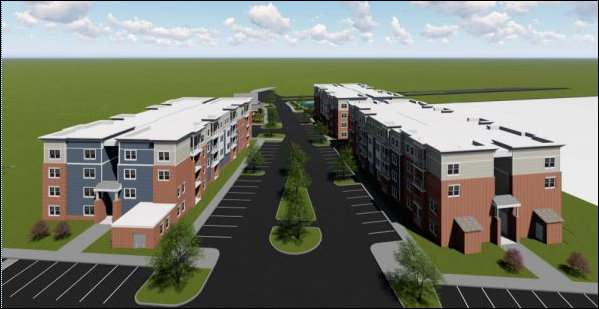The Lawson Companies., a Virginia Beach multifamily development company, is planning to construct a $19.25 million, low-income housing project in South Richmond, reports Richmond BizSense. The apartment complex will have 96 units, for an average cost of $200,000 each. Rent for two-bedroom apartments will average around $1,000 a month, while three-bedroom units will go for $1,100.
“We see this project drawing a lot of families,” said Freddie Fletcher, a Lawson development associate. “It’s a good market over there for families looking for an affordable, Class A apartment.”
The Virginia Housing Development Authority (VHDA) is providing financing for the development. The article does not say whether or not the $1,000-a-month rent will be subsidized from vouchers or other public funds.
The project appears to be similar to many other lower-income housing projects in Virginia. Lawson Corp. has $290 million in ongoing development across Hampton Roads and Northern Virginia, and is looking to do more deals in the Richmond region.
Questions, oh, so many questions. What does the VHDA financing look like? How much is the implicit subsidy from low-interest rate loans worth? How much of that subsidy flows to Lawson Companies bottom line, and how much to lower rent?
Who else, if anyone, is subsidizing rent for the low-income units, and how large is that subsidy?
The community will include a clubhouse with a fitness center, laundry facilities, dog park, playground, and indoor and outdoor bike storage. Very nice. These amenities certainly look more appealing than those in, say, public housing such as Mosby Court or Creighton Court. What does it take for a family to qualify for subsidized housing in such a nice apartment complex, and how are tenants selected?
The project has set aside significant space for parking. Are we to assume that the low-income residents living in the project will all own cars? Or are the parking spaces an artifact of mindless city mandates that ignore renter demographics?
How many square feet will each “Class A” apartment have? What is the justification for the square footage? Is there an expectation that lower-income renters are entitled to the same square footage and amenities as middle-class families who pay their full freight?
Bacon’s bottom line: A cost of $200,000 per unit strikes me as excessive. Why does it cost so much to house lower-income families? Is there no better way?


Leave a Reply
You must be logged in to post a comment.